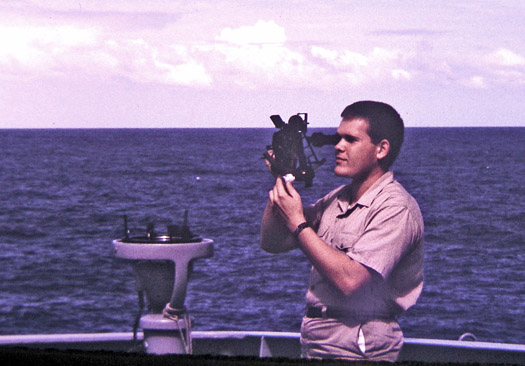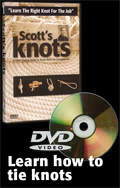Using the Sextant and Azimuth Circle
| Using the Sextant and Azimuth Circle |
|---|
 |
| Rating: 2.0/5 [1 user] |
|
<< Previous Image Album Contents Next Image >> |
From: kpbosun
views 32767
Here is a view of the Plath Sextant, pictured earlier, in hand ready to take a daytime sighting. Also seen is the gyro compass REPEATER with the Azimuth Circle or Ring mounted over the Compass Card. During the day at sea, Latitude was determined at Solar Noon whenever possible. Single Solar LOPs (lines of position) would also be taken several times a day and advanced by Dead Reckoning to get a Running Fix. If conditions allowed, and you wanted to show off just a little, you would try to get daylight LOPs of the Moon, Venus, Jupiter, Sirius, or even Vega. This way you might get a good FIX without waiting for Star Time.
Filename: w-sextant a web.jpg At celestial sunrise and sunset, you would use the Azimuth Circle to record an AZIMUTH of the SUN. By comparing the observed value to the computed value, you could check compass accuracy. The biggest use of the Azimuth circle was for navigation by bearings when within sight of land features. Lesser, but very important, uses were bearing checks for star observations at STAR TIME and checking the bearings of approaching vessels. (This was taken long ago and far away. It was my first trip on my license, and the sextant was brand new. I wanted a picture to send home.) |
| RSS feed | Feed Description |
|---|---|
| Complete RSS feed | |
| RSS feed for: Tools & Instruments | |
| RSS feed for: Nautical Instruments | |
| A Rich Site Summary (RSS) feed is an xml data file that provides a summary of the information contained here. It is not designed to be viewed in your browser, but instead by rss reader software. If you do not know what this means - you can safely ignore it, as it is provided for advanced users with rss reader software only. | |


